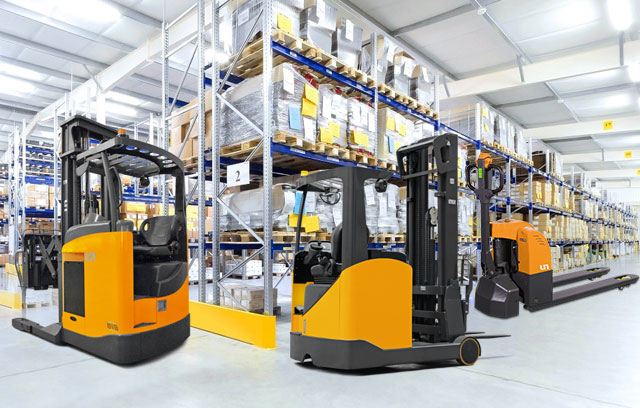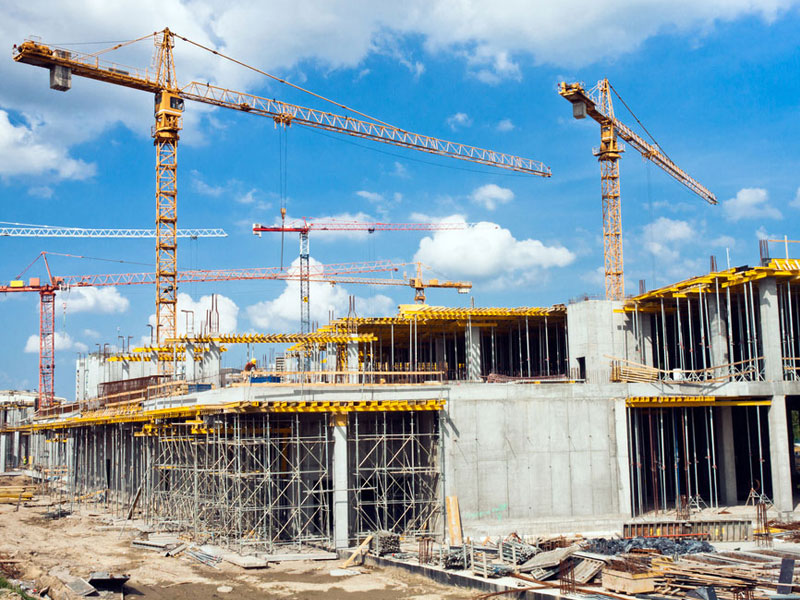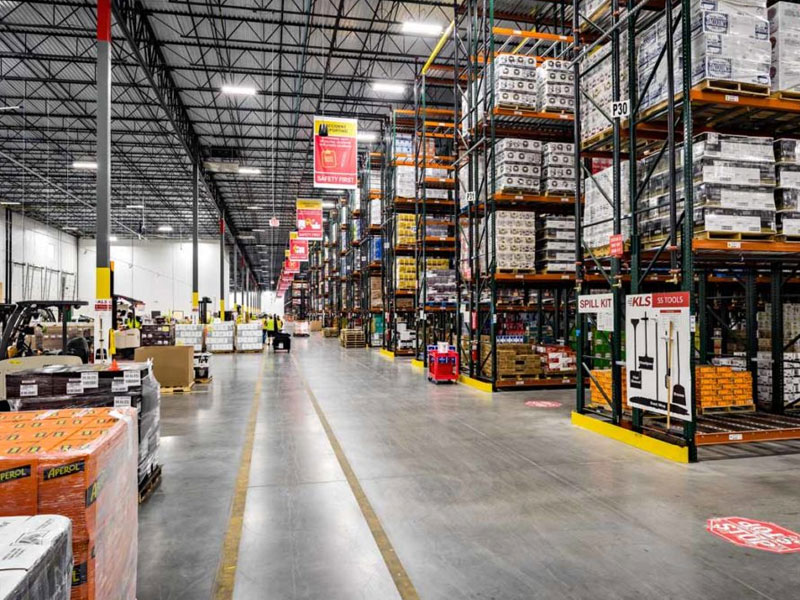Overview of Lifting Power Generation in Electric Forklifts
In electric forklifts, lifting power is generated through an electro-mechanical system that converts electrical energy into hydraulic or mechanical motion. The central power source is a rechargeable battery that supplies electricity to the drive motor and the hydraulic pump. This energy is used to operate the lifting mechanism, which raises and lowers the forks according to the operator’s control inputs. The conversion of electrical energy into lifting motion is accomplished through a combination of electric motors, hydraulic cylinders, valves, and electronic controllers that work together to ensure smooth and reliable operation.
Role of the Battery and Power Supply
The primary energy source in electric forklifts is the traction battery, typically made from lead-acid or lithium-ion cells. These batteries store electrical energy and deliver it to the forklift’s powertrain through a regulated circuit. The voltage and current output of the battery determine the available power for both propulsion and lifting functions. Modern electric forklifts use high-capacity batteries that provide consistent voltage under varying load conditions. Battery management systems monitor temperature, charge levels, and discharge rates to ensure efficient energy use and prevent overheating or over-discharge. The stability of the power supply directly influences the smoothness of lifting operations.
Electric Motor Function in Lifting Systems
The lifting mechanism in an electric forklift is powered by a dedicated electric motor, which drives a hydraulic pump or mechanical actuator. In most designs, a DC or AC motor is used depending on the forklift type. DC motors are commonly found in older models, while AC motors are now favored for their higher efficiency and lower maintenance requirements. The motor’s torque output is directly related to the lifting capacity of the forklift. When the operator engages the lift control, the motor receives a command signal from the controller, causing it to rotate and drive the hydraulic pump. This initiates the flow of pressurized hydraulic fluid, which is responsible for moving the lifting cylinders.
Hydraulic Power Conversion and Lifting Cylinders
Hydraulic systems play a crucial role in transforming electrical power into mechanical lifting force. When the hydraulic pump, driven by the electric motor, pressurizes the hydraulic fluid, this pressurized oil flows into the lifting cylinders located in the forklift mast. The cylinders contain pistons that move upward when fluid pressure is applied, pushing the forks and load upward. The amount of lifting force generated depends on the hydraulic pressure and cylinder diameter. Control valves regulate the fluid flow to ensure gradual movement, preventing sudden jerks or drops during operation. This combination of electrical input and hydraulic output provides controlled lifting performance suitable for various load capacities.
Electronic Control Systems and Precision Regulation
Modern electric forklifts rely on electronic control systems to manage the interaction between the motor, hydraulic pump, and lifting cylinders. These systems use sensors to measure parameters such as motor speed, fluid pressure, load weight, and lift height. The controller processes this information in real-time and adjusts motor output accordingly. For instance, when heavier loads are detected, the control system increases current supply to the motor to generate more torque. Similarly, when the forks approach the maximum height, the controller reduces lift speed to prevent mechanical stress. Electronic controls enhance precision and safety, ensuring smooth transitions between lifting, lowering, and holding operations.
Flow Regulation and Valve Mechanisms
Valve assemblies are critical components for controlling hydraulic flow in electric forklifts. These valves include pressure relief valves, directional control valves, and flow control valves. Pressure relief valves prevent overloading by releasing excess fluid pressure, protecting both the motor and the hydraulic system. Directional valves determine the path of fluid flow, deciding whether the forks should rise, lower, or stay stationary. Flow control valves adjust the fluid speed, thereby controlling the lifting and lowering speed of the forks. Together, these valves enable precise control over lifting motion and ensure system stability under varying load conditions.
Interaction Between Lifting and Propulsion Systems
In electric forklifts, both the lifting system and the propulsion system draw power from the same battery source. To balance power distribution, an electronic controller prioritizes energy allocation based on operational needs. During heavy lifting, the controller temporarily limits propulsion power to ensure adequate current supply to the lifting motor. Conversely, when driving, the lifting system consumes minimal energy. This intelligent power management ensures that both functions can operate simultaneously without overloading the electrical circuit. It also improves battery efficiency, prolonging operating time between charges.
Energy Efficiency and Regenerative Systems
Many modern electric forklifts incorporate regenerative hydraulic systems that enhance energy efficiency. When lowering a load, the hydraulic cylinders act in reverse, converting potential energy into hydraulic pressure that can assist the motor. In some advanced models, the electric motor operates in regenerative mode, feeding electricity back into the battery during lowering or braking. This process reduces total energy consumption and extends battery life. Efficient design of the hydraulic system, including low-friction seals and optimized pump configurations, also contributes to minimizing power losses.
Comparison of Hydraulic and Mechanical Lifting Systems
While most electric forklifts rely on hydraulic lifting systems, some models utilize mechanical or electro-mechanical lifting mechanisms. Mechanical systems use screw drives or chain-driven actuators powered by electric motors. These systems offer higher positioning precision but are generally limited to lighter loads. Hydraulic systems, on the other hand, are better suited for heavy-duty lifting due to their higher power density and smooth operation. The table below outlines the key differences between hydraulic and mechanical lifting configurations.
| Aspect | Hydraulic Lifting System | Mechanical Lifting System |
|---|---|---|
| Power Source | Electric motor driving a hydraulic pump | Electric motor driving screw or chain actuator |
| Lifting Capacity | High, suitable for heavy loads | Moderate, suitable for light or medium loads |
| Control Precision | Good, dependent on valve and pressure control | High, suitable for precision lifting |
| Maintenance Requirements | Regular hydraulic fluid and seal checks | Minimal lubrication and alignment checks |
| Energy Efficiency | Improved with regenerative systems | Generally efficient with less fluid loss |
Safety Mechanisms in Lifting Power Control
Safety is an integral aspect of lifting power management in electric forklifts. Pressure sensors and overload protection systems prevent the hydraulic circuit from exceeding safe limits. Additionally, non-return valves ensure that the forks remain stable in the event of a sudden power loss. Electronic controllers are programmed with safety thresholds that automatically stop lifting if anomalies such as overcurrent, overheating, or excessive load are detected. Mechanical locks and limit switches provide additional protection, especially when the forklift is stationary or performing maintenance operations.
Operator Controls and Ergonomic Design
Operator input plays a key role in controlling lifting power. Modern electric forklifts use electronic joysticks or lever controls that send proportional signals to the control system. These inputs determine the direction and speed of lifting or lowering actions. The system’s sensitivity is calibrated to respond smoothly, minimizing fatigue for the operator. Some forklifts feature adjustable control settings that allow operators to customize response speed based on the type of load or work environment. Ergonomic positioning of controls also enhances accuracy and comfort during long shifts.
Monitoring Systems and Diagnostic Integration
Continuous monitoring and diagnostics are essential for maintaining reliable lifting performance. Electric forklifts use built-in monitoring systems that track motor temperature, hydraulic pressure, and battery voltage. These parameters are displayed on digital dashboards for operator awareness. If any measurement exceeds safe limits, the system issues alerts or automatically limits performance to prevent damage. Diagnostic ports and onboard software allow maintenance personnel to access detailed data logs for troubleshooting. Predictive maintenance algorithms analyze this data to identify potential failures before they cause downtime.
Control Logic and Proportional Feedback
The control logic in electric forklifts uses proportional-integral-derivative (PID) feedback algorithms to regulate lifting motion. When the operator initiates a lift, the control unit compares actual motor performance with target parameters and makes real-time adjustments. This ensures consistent lifting speed regardless of load weight or battery voltage fluctuations. Sensors measure fork height, hydraulic pressure, and motor current, feeding data back into the control system. The PID control method ensures precise lifting control and minimizes oscillations or mechanical strain during operation.
Advances in Smart Forklift Technology
Recent technological developments have introduced smart systems that optimize lifting power management through automation and connectivity. Some electric forklifts feature adaptive lifting control, which automatically adjusts lifting speed and acceleration based on load distribution. Others are equipped with telematics systems that record lifting data for fleet management analysis. These smart features improve operational consistency, reduce energy use, and extend component lifespan. Integration with Internet of Things (IoT) platforms enables remote monitoring of lifting performance and predictive maintenance scheduling.
Environmental and Energy Considerations
The use of electric forklifts contributes to cleaner industrial environments by eliminating exhaust emissions. The energy efficiency of lifting systems depends on proper motor selection, optimized hydraulic design, and effective power control. Using variable-frequency drives (VFDs) and energy recovery circuits helps reduce electricity consumption. Additionally, maintaining optimal hydraulic oil temperature and minimizing internal leakage enhances performance. As industries move toward sustainability, manufacturers continue to develop electric forklift systems that balance lifting power, energy conservation, and environmental responsibility.











 中文简体
中文简体 عربى
عربى Español
Español














